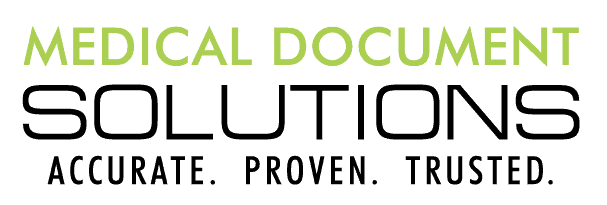Provider productivity is the lynchpin of the healthcare system – here’s how manual clinical abstraction can help organizations better maintain it during an EHR migration.
According to a recent American Medical Group Association survey, average physician productivity, or the quantity of physicians’ work, dropped in 2018, thanks, in part, to “burdensome electronic health record (EHR) use.”1 While EHRs were designed with the goal of enhancing provider productivity, this comes as little surprise. To date, several research studies suggest physicians are spending hours, even up to half of their work day, interacting with the EHR, instead of focusing on more complex clinical tasks.2,3 It is a burden: and it is one that can increase exponentially when an organization is in the midst of an EHR migration.
Mark Masters, an administrator at a large cardiology practice as well as President and Chief Executive Officer at MDabstract, said, as many organizations contemplate a migration, it’s important to consider ways to safeguard provider productivity from day one.
“Doctors, as they work, engage in complex thought processes to make vital clinical decisions. When we take them out of what’s familiar, into a new EHR system, important clinical information may be missing or not in the place they expect it to be. It makes their work even more difficult,” he said.
“So when you can take steps to protect provider productivity, like adding manual clinical abstraction to your migration plan, it helps doctors focus on patient care and supports the organization at large.”
1. TO PROVIDE THE HIGHEST QUALITY CARE TO PATIENTS
As healthcare organizations across the country are considering EHR migrations, whether due to a merger, acquisition or the need for a more sophisticated information technology platform, Masters said it’s important to find ways to not just manage the disruption but to support and even enhance physicians’ ability to work effectively. As physicians rely on EHRs to aid them in their work, Masters emphasized two key reasons that manual clinical abstraction is a critical component of any EHR migration plan. Masters said it is well known that electronic migration techniques, no matter how sophisticated, cannot move all the clinical information required for a physician to practice medicine at the point of care.
“You need to determine the essential components that must be provided to the physician at the point of care so they can do their jobs – and do them well,” he said. “In many healthcare systems, current medical support staff are already overwhelmed and don’t necessarily possess the clinical knowledge to accurately abstract patient charts.” When a third-party clinical abstraction partner is involved, healthcare organizations can be assured that physicians are getting a new chart that is a single, trusted source of truth. And with that, physicians have the right clinical data at their fingertips to help them synthesize their thoughts, track results and support decisions that lead to the highest quality of patient care.
2. TO PROTECT A HEALTHCARE ORGANIZATION’S BOTTOM LINE
Disruptions to provider productivity not only can affect the quality of patient care, but also affect many downstream processes. “A new EHR system can cause disruption to everything from patient check-in to face-to-face doctor time. This can lead to a dramatic decrease in the number of patients a provider is able to see per day,” Masters said. He argued that this not only can lead to fewer billings and reimbursements, but also lower patient satisfaction scores.
“Consumer-driven healthcare is on the rise,” he said. “When a patient feels their physician is distracted or doesn’t know their health history, or if that patient can’t get the timely care they need, it could lead to lower satisfaction ratings or even patients deciding to leave a practice.” By using an expert third-party manual clinical abstraction partner to help move vital data into the new EHR system during a migration, ensuring that the data each physician needs is there before a patient’s appointment, healthcare organizations can preserve the level of efficiency required to keep the organization healthy and whole at every level, from the examining room to the back office, thus maximizing revenue.
“That revenue is what needs to be earned to pay for healthcare costs and to keep the organization growing,” he said. “It shouldn’t be downplayed.”
Physician productivity, at its heart, is the barometer for how well an organization has executed an EHR migration, according to Masters. By augmenting their EHR conversion with manual clinical abstraction, healthcare organizations can help physicians access the data they need – helping to boost both patient care and satisfaction as well as back-end business processes.
“When you work with a partner with the training and experience to understand the nuances of EHR migration, you can help make sure that productivity doesn’t diminish with your implementation,” he said. “Since productivity reflects everything from the point of care to collecting revenue, it pays to ensure that you are doing everything in your power
to make sure it’s protected.”






